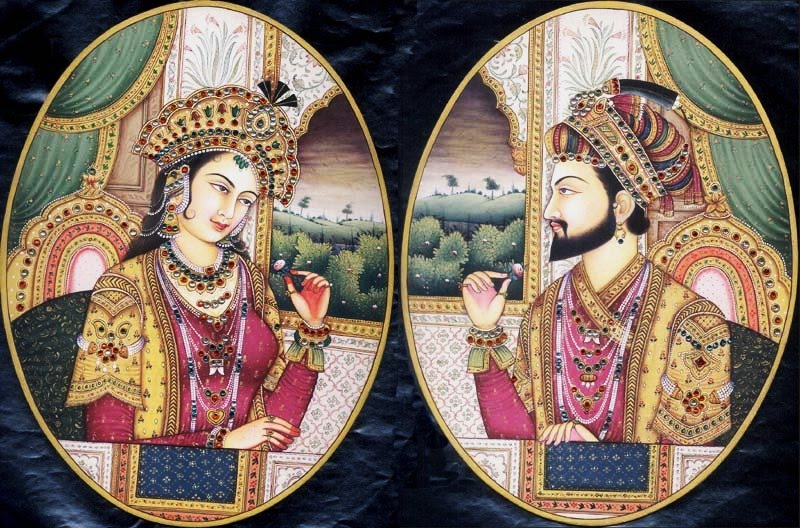Taj Mahal: The Jewel of India
The Taj Mahal is a white marble mausoleum in Agra, India. It is widely considered to be a premier example of Mughal architecture, which combines elements of Indian, Persian, and Islamic styles, and is one of India’s top tourist attractions. It is commonly referred to as the Jewel of India. It is also arguably the world's greatest monument of love.
History
In the 1630s, the northern India city of Agra was the seat of the Muslim Mughal Empire. The emperor, Shah Jahan, married Mumtaz Mahal (originally Arjumand Bano Begum) when she was 14 years old, and she became his most beloved wife. When she died giving birth to their 14th child in 1631, the emperor was grief-stricken. According to legend, with her dying breath Mumtaz asked for her husband to build her a mausoleum more beautiful than any in the world. Six months later, the foundation was laid for the Taj, and the devastated emperor sought to preserve his wife’s memory through construction of the elaborate tomb. [Related: The 6 Most Tragic Love Stories in History]
Architectural wonder
Though the 145-foot-tall domed marble mausoleum is the most iconic element of the Taj Mahal, the site is actually a complex of structures located on the right bank of the Yamuna River. The complex covers nearly 42 acres, incorporating gardens and a red sandstone guesthouse, mosque, and gates. The red sandstone on the lesser buildings and white marble on mausoleum corresponds with the traditional Indian caste system, in which Brahmins had white buildings and the warrior caste had red. This aligned the Mughals with the two powerful castes.
The Taj Mahal is an aesthetic wonder of symmetry and balance created from solids and voids, lights and darks, domes and arches. The domed mausoleum features uniform shapes that are perfectly symmetrical, including twin domes astride the primary onion dome, arches and four minarets from which calls to prayer can be heard. Inside, the octagonal tomb is surrounded by portal halls and four corner rooms, with the pattern repeating on the floor above. The tomb’s placement at end of a long pool is, according to UNESCO, genius: “Placing the tomb at one end of the quadripartite garden rather than in the exact centre, [adds] rich depth and perspective to the distant view of the monument.”
Color and decoration
Get the world’s most fascinating discoveries delivered straight to your inbox.
Though at a distance it appears to be smooth marble, the Taj Mahal’s exterior is actually rife with intricate carvings and inlays. Motifs include vegetative designs, herringbone and other abstract patterns, and calligraphy of Persian poetry and the Quran.
The interior of the mausoleum features delicate inlays in floral and geometric patterns made with precious stones. Inside the octagonal tomb are two cenotaphs of Mumtaz Mahal and Shah Jahan, which are inlaid with precious stones in floral designs. An octagonal marble lattice screen of exquisite craftsmanship encircles the cenotaphs.
While the buildings’ clean proportions suggest Persian influence, the style of embellishment is Hindu. The garden design and floral motifs symbolize a beautiful paradise, as well as reference Hindu images such as the “vase of plenty.”
Construction
About 22,000 laborers and 1,000 elephants worked to complete the central mausoleum in 1648. The identity of the Taj Mahal’s architect remains unknown, though historians speculate that Ustad Ahmad played a primary role, based on a claim in a seventeenth-century manuscript. Other men credited include Mukrimat Khan and Mir Abdul Karim, the chief supervisors and administrators, and Ismail Afandi, the designer of the main dome. According to historian Milo Beach in the PBS series “Treasures of the World,” it is thought that Shah Jahan also had a large hand in the Taj Mahal’s design, because the emperor was interested in architecture and obsessed with the building’s perfection.
Masons, inlayers, carvers, painters, stonecutters and other artisans were brought from all over the empire, as well as central Asia and Iran, to build the Taj. To house all the workers, the city of Mumtazabad grew up around the grounds. A 10-mile ramp ran through Agra and was used for transporting materials to the top of the dome. Materials were brought from every corner of the empire and beyond, including marble from Rajasthan and more than 40 types of gems from Tibet, Baghdad, Turkestan and other locations.
A gigantic brick scaffold supported the dome during assembly, and it was estimated that five years would be required to disassemble it. According to legend, when Shah Jahan heard this he decreed that anyone who helped remove the bricks could keep them. The scaffold was dismantled overnight.
The Taj Mahal became a UNESCO World Heritage Site in 1983. In 2007, it was voted one of the New 7 Wonders of the World in the New7Wonders Foundation’s worldwide poll.
— Jessie Szalay, LiveScience Contributor
Jessie Szalay is a contributing writer to FSR Magazine. Prior to writing for Live Science, she was an editor at Living Social. She holds an MFA in nonfiction writing from George Mason University and a bachelor's degree in sociology from Kenyon College.





